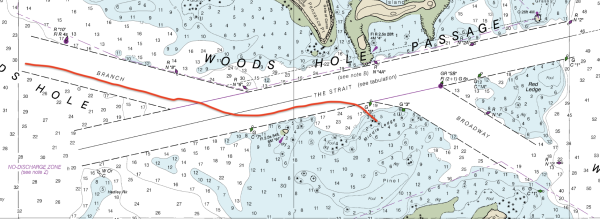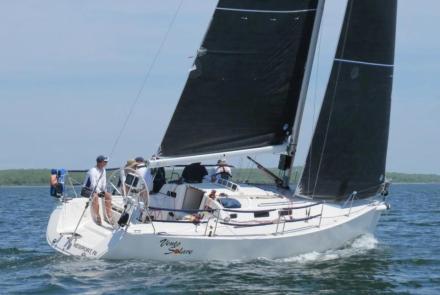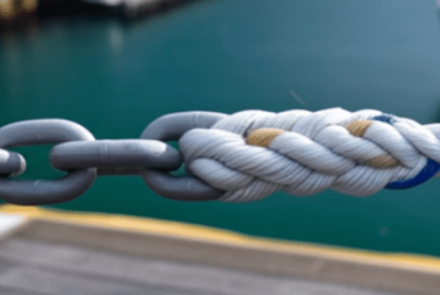Woods Hole Passage, Version Two
“From the CCA School of Hard Rocks
...lessons learned in pursuit of the Art of Seamanship”
By John Franklin, Boston Station, November 2023
Ernie Godshalk’s account of a near miss while negotiating Wood’s Hole Passage reminded me of my own more dramatic experience in the same passage.
It was September 2006. We had hauled out Al Shaheen at Bass Harbor, Maine, for the 2005/6 winter, spent the summer cruising Nova Scotia, and were returning to the Caribbean for the winter. We had come though the Cape Cod Canal a couple of days before and stopped off to visit friends Stan and Julie at Wings Neck, just south of the canal.
The plan was for the three men, Stan, Alun and myself, to sail to Nantucket whilst the ladies took the ferry. Stan was a sailor/boat owner, had lived all his life on Cape Cod and had been through Woods Hole Passage “hundreds of times." Alun was a non-sailor. This was his first time on a sailboat.
Al Shaheen was a custom-design 42 ft performance ocean cruising boat, strongly built in aluminum. I had personally managed the build project in the UK. It was a bright fall day with a cloudless sky and zero wind. We set off early in the day to catch the tide through the passage, motoring at 5 knots. In view of Stan’s apparent knowledge, I delegated the pilotage to him and, stupidly, didn’t keep an eye on the charts and the marks although I had read up on the passage. At that stage we did not have a chart plotter so we were relying on paper charts and eyeball navigation in very clear visibility.
As we approached the area we were relaxed, having a coffee and chatting in the sunshine. None of us was wearing a life jacket, and Alun was sitting on deck forward of the cockpit. As we approached the change of direction of the marked channel we were doing 10 knots over the ground, and I was somewhat confused by the proliferation of the buoys and that a ferry ahead of us took a sharp turn to port. I just assumed she was making for Falmouth.
Seconds later we hit solid rock at 10 knots with a massive impact. The boat stopped abruptly, bounced off, then hit a second time, spun through 180 degrees, and with a final glancing blow we were off sideways into clear water. Alun, a non-swimmer, had been unseated by the impact and thrown forward along the deck but fortunately ended up in the guardrails without going overboard.

Analysis later showed that we had taken a starboard mark on the wrong side and into a patch of rocks with only a few feet of water over them. Fortunately, Al Shaheen was very strongly constructed, and there was minimal damage to the keel and only a scratch on the rudder. I am convinced that an impact of that severity would have torn the keel right out of a GRP boat.
What did I learn from the accident?
1. Never trust the navigation/pilotage to someone whom you had not sailed with before and whose competence you had not been able to evaluate.
2. In a difficult pilotage situation ALWAYS read up the pilotage notes beforehand and make sure you know the danger areas. Recognize and check off the buoys as you pass them.
3. ALWAYS wear a life jacket when in a fast-moving situation even in clam windless situations
4. Crew stay in the cockpit unless working on deck and then wear a lifejacket and tether.
The Cruising Club of America is a collection of passionate, seriously accomplished, ocean sailors making adventurous use of the seas. All members have extensive offshore boat handling, seamanship, and command experience honed over many years. “School of Hard Rocks” stories, published by the CCA Safety and Seamanship Committee, are intended to advance seamanship and help skippers promote a Culture of Safety aboard their vessels.




